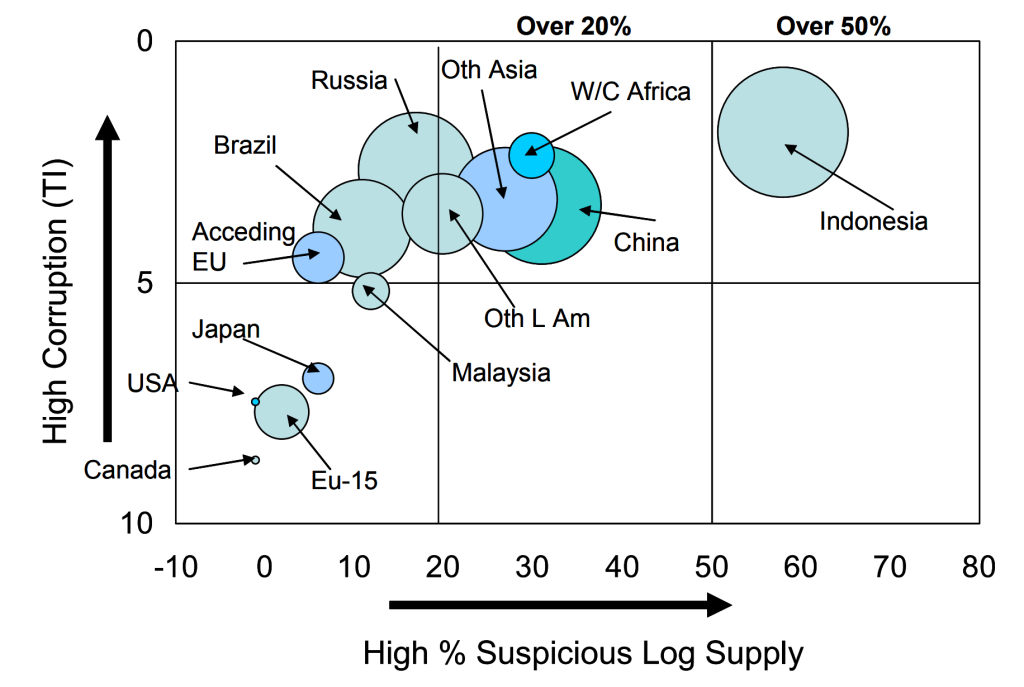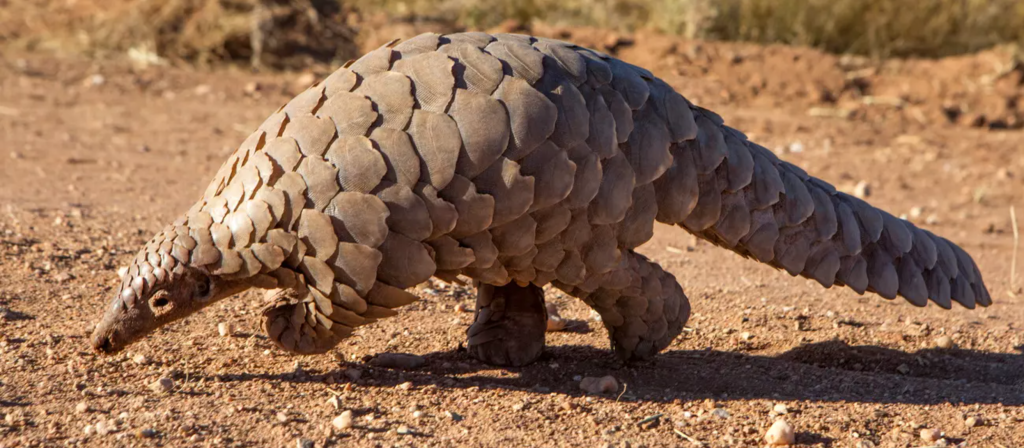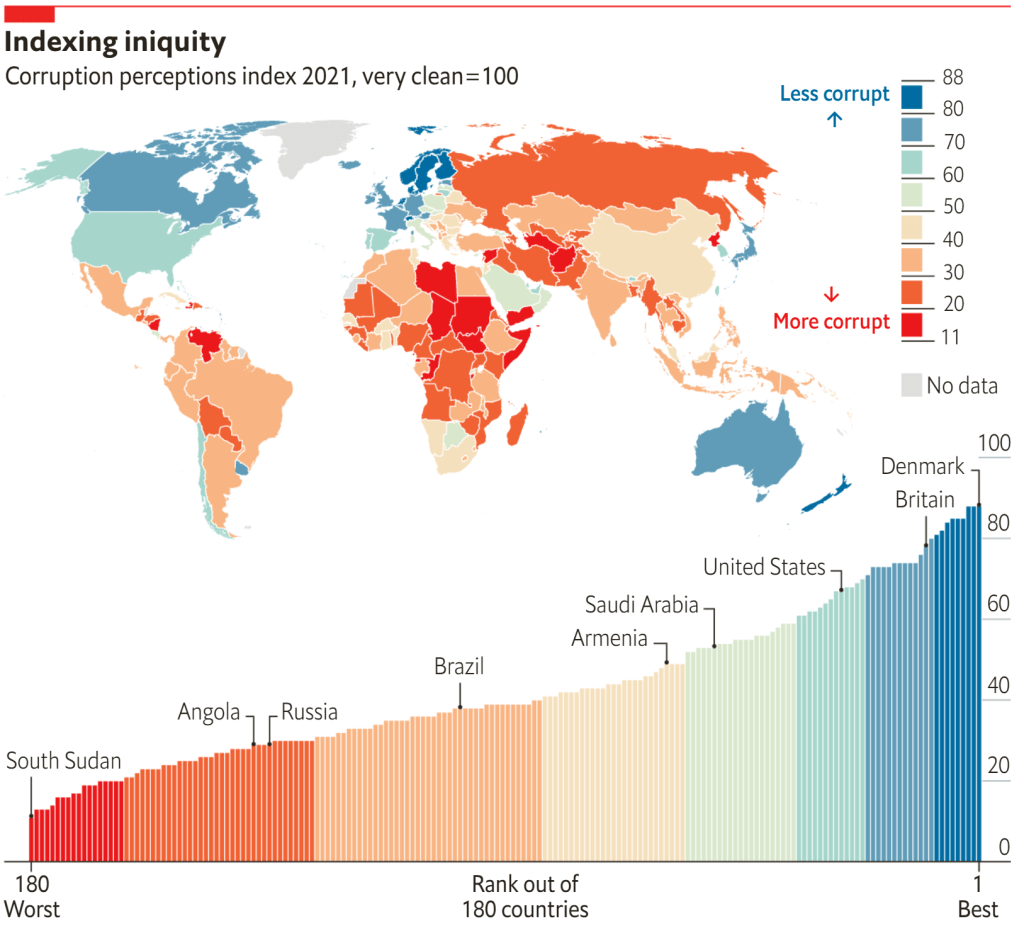Amongst the vast array of global challenges, corruption emerges as a pervasive and insidious force. Corruption not only undermines the pillars of justice and equality but also takes a toll on our planet’s well-being. I’m sure it is no surprise for most to learn that there are a number of detrimental impacts arising from corruption. However, the environmental cost of corruption often remains obscured in the shadows. As the world grapples with the urgent need for sustainable practices and collective environmental responsibility it is becoming evermore crucial to acknowledge this connection between corruption and ecological damage.

Image source: World Bank.
The major challenges associated with the environmental cost of corruption stem from its integration into daily life and business practices around the globe. Particularly in developing nations, corruption affects various facets of society by diverting funds from their intended purposes. In addition to its association with the misuse of public funding, corruption contributes to the wasteful use of natural resources and other environmental misconduct.
Is corruption an environmental issue?
Research efforts are beginning to more definitively show the true environmental cost of corruption. For example, direct links can be seen between corruption and carbon dioxide emissions, environmental degradation, and illegitimate land use. Whether it be embezzlement during the establishment of environmental programs, bribery of officials and financial institutions to turn a blind eye to misconduct, or grand corruption when permits for natural resource exploitation are issued, It seems there are few areas of the environment that are truly safe from the greedy hands of corruption.
The Timber Industry
Corruption within the timber industry, or “timber trafficking” is an ongoing problem in many parts of the world. It is perhaps one of the most direct ways we can observe the environmental cost of corruption. Illegal harvesting can lead to biodiversity loss and a number of other negative impacts on important environmental services. In 2021, the Basel Institute on Governance estimated that illegal logging accounted for as much as 30 percent of timber harvests. Studies have shown that in areas where illegal timber harvest and deforestation is prevalent, corruption is also often high.

Image source: Seneca Creek Associates, (2004).
Corruption may well be the leading driver of illegal deforestation. It not only facilitates illicit activities but also weakens law enforcement efforts to combat them. In the context of the timber industry, corruption often presents itself through bribery. Individuals or organisations may use bribery to secure permits or land concessions, acquire fraudulent certifications, or persuade officials to ignore environmental misconduct. In regions such as East Asia, illegal logging is especially prominent, orchestrated by large international companies and transnational criminal gangs. Estimates suggest that, at the current rate, the region could lose approximately 70 million hectares of natural forest by 2030. This is equivalent to about 25 percent of the projected global total. The demand for high-value hardwoods in other parts of the world often drives these high rates of timber trafficking.
The Water Sector
The water sector is also not safe from the detriments of corruption. Estimates suggest that corruption can inflate expenses related to constructing water infrastructure by up to 40 percent. This has adverse effects, especially in developing nations, where safe drinking water may already be scarce. Water is a basic human need, however, it is sadly one that millions of people struggle to access daily. Whether it be water for drinking, sanitation, or food preparation, corruption can make it more difficult for people to have safe and reliable access to this precious resource.

Image source: Armour.
The water sector is particularly vulnerable to corruption due to the large number of players involved. Not only does it have direct impacts on humans, but also can result in dire environmental impacts. When bribery is involved, cover-ups of the environmental impact assessments of projects can occur. The cost of environmental corruption here is paid directly by the suffering ecosystems. Bribes may also be paid to conceal the release of wastewater and toxins into water resources and to permit excessive abstraction from rivers and groundwater reservoirs. This has direct impacts on both ecosystems and the humans that rely on these water sources.
Wildlife Trade
Corruption also enables poaching, transportation, and sale of illegal wildlife products at each stage of the global supply chain. This has significant negative impacts on the ecosystems and animals involved. Corruption can facilitate poaching through illegal payments to obtain hunting licenses or by bribing park patrol officials. Illegal payments may facilitate transportation by obtaining export certificates. The illegal sale of wildlife is facilitated through the bribery of authoritative figures.

Image source: ifaw.
Studies show that wildlife crime is significantly more problematic in regions where corruption is widespread. Often exotic animals are the targets of the illegal wildlife trade, poached and harvested for their skin, scales, or feathers. The illegal wildlife trade has detrimental effects on both biodiversity loss and ecosystem collapse. Furthermore, it pushes many animals to the brink of extinction.
Corruption is one of the principal drivers of environmental crimes and enables them along the whole supply chain. Deforestation, waterway misconduct, and wildlife trafficking are just some of the many environmental misconducts driven by corruption. So what can we do to stop it?
Where is the environmental cost of corruption most prominent?
To investigate future pathways to stopping environmental corruption we must first understand where it occurs most prominently. Research shows that the extent of the link between corruption and environmental crimes seems to be stronger in developing countries. As a result, environmental corruption is damaging some of our most unique ecosystems and affecting many of the most vulnerable people.

Image source: The Economist.
In regions such as Papua New Guinea (PNG) illegal logging is rampant due to corruption within the government. The industry is granted the leeway to disregard PNG laws, often receiving preferential treatment, while the rural poor are left to suffer the social and environmental repercussions arising from an industry that largely operates beyond the confines of regulatory oversight. Across the globe, in Southern Africa, environmental sustainability efforts are suffering greatly due to high levels of corruption. The high levels of corruption here also facilitate the loss of the rich and unique biodiversity that is found within this region.
Although the link between corruption and environmental crimes seems to be higher in developing areas, developed nations are also not immune to corruption. According to a Forbes article, the five largest gas and oil companies allocate approximately $200 million each year for lobbying efforts aimed at influencing, delaying, or obstructing the implementation of binding climate-driven policies. Politicians occasionally become caught up in lobbying scandals, accepting huge bonuses on top of their already large salaries to lobby on behalf of companies. Unfortunately, companies based in rich, developed countries also often facilitate corruption abroad, taking advantage of those in lower socioeconomic regions.
A pathway to lessen the environmental cost of corruption
Addressing corruption in the environmental and natural resources sector will require a combination of enforcement, prevention, and awareness measures. Some strategies to achieve this includes: reforms to improve both transparency and accountability, more succinct environmental standards, and stricter legislation to reduce loopholes. For example, to address timber trafficking, some suggest that law enforcement should move beyond targeting low-level criminals and focus instead on tracing where the profits from illegal logging go.
Organizations like the U4 Anti-corruption Resource Centre have proposed establishing an environmental corruption database. A globally searchable database could aid both governmental and non-governmental entities committed to addressing these issues.

Image source: ICS.
Achieving the United Nations Sustainable Development Goals (SDGs) and How They Link to the Environmental Cost of Corruption
This month, the THRIVE Project focuses its efforts on the United Nations sustainable development goals number 16 and 17. SDG 16 aims to “promote peaceful and inclusive societies for sustainable development, provide access to justice for all and build effective, accountable and inclusive institutions at all levels”. Corruption undermines the principles of justice and the effectiveness of institutions. Strengthening institutions and combating corruption are crucial components of SDG 16. Addressing corruption equips nations to enforce environmental laws and regulations, promoting environmental justice and accountability
SDG 17 aims to “strengthen the means of implementation and revitalise the Global Partnership for Sustainable Development”. In order to address environmental damage linked to corruption, countries should work together to share information and resources. International collaboration is essential to combat cross-border environmental crimes, and partnerships can contribute to building a collective response against corruption’s negative impact on the environment.
A Thrivable Framework
THRIVE stands for The Holistic Regenerative Innovative Value Entity. The THRIVE Project exists to promote a future in which all life on earth can not only survive but also thrive. We dedicate our mission to ensuring the enduring welfare and ‘thrivability‘ of all Earth’s species. The THRIVE framework is a Holistic Regenerative Framework. The purpose of the THRIVE Framework is to measure sustainability, assessing the performance of strategies and operations by integrating 12 Foundational Focus areas.
If you would like to learn more about how our research works at The THRIVE Project visit our website. Additionally, you may follow our educational podcast series and blog articles, and also sign up for our newsletter for regular updates. Additionally, you can register for our Thrivability Matters Webinar Series, where you’ll get a chance to hear engaging talks from experts in the field.